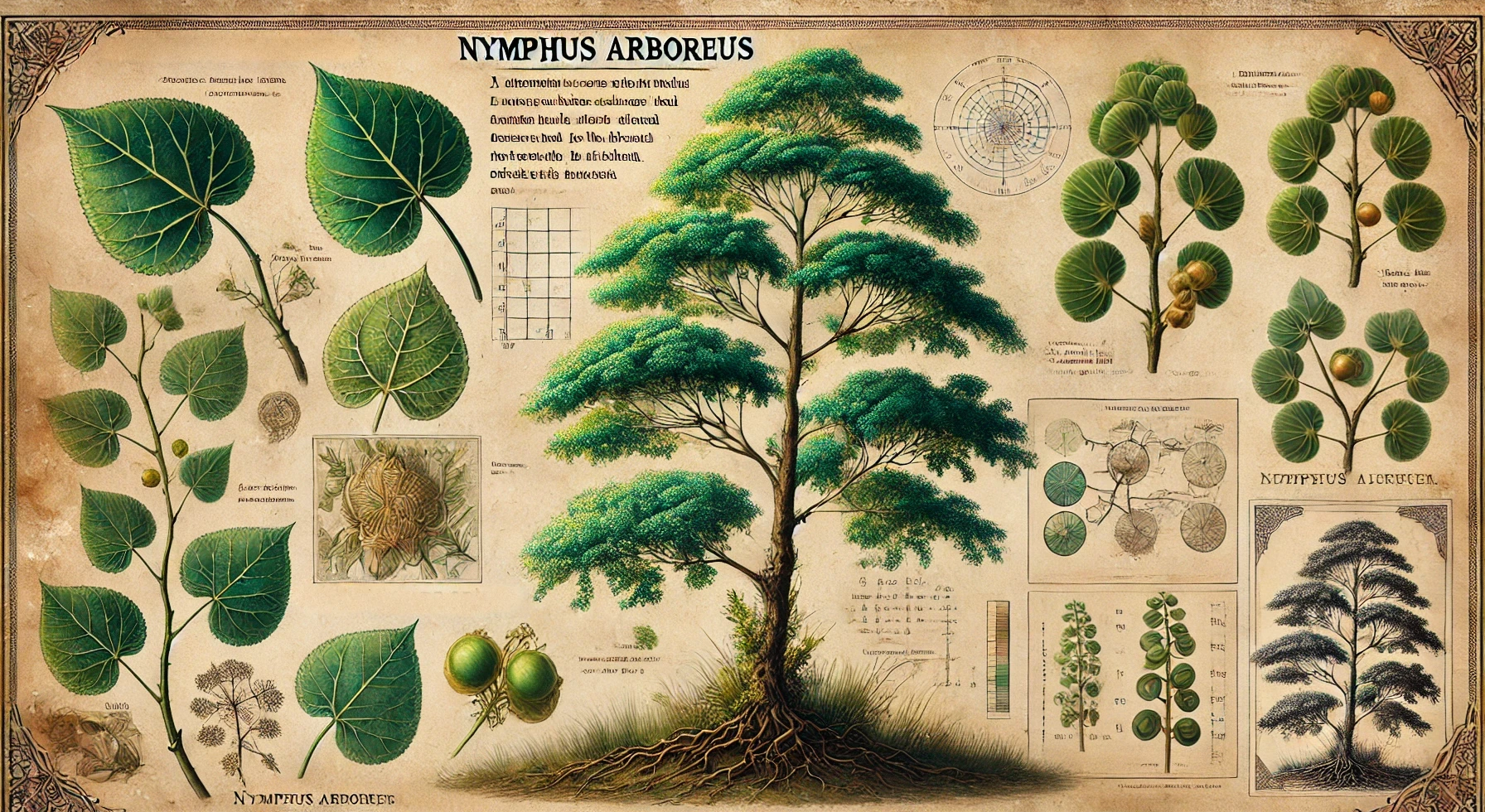Visual Description
The Sylph-Sapling is a slender, otherworldly tree rarely seen outside the heart of ancient forests. Its bark is smooth and pale, veined with a soft, shifting luminescence that glows more brightly in the moonlight. Even in still air, the tree’s narrow trunk and canopy of shimmering green leaves seem to sway gently—as though listening to a rhythm beyond the wind. Though never growing more than ten feet in height, its presence is unmistakable. It does not tower, but stands with intention, like a sentinel wrapped in starlight.Habitat and Growth
The sapling is found only in the most undisturbed forest sanctuaries—places of layered memory, stillness, and deep-rooted balance. It often grows in small clearings where no path leads, fed by old roots and unseen waters. The air in such places is quiet, but not empty. The tree reproduces through tiny, glowing seeds, released high into the air where they drift like stars before vanishing into the understory. No one has ever seen them take root—only the next generation, already standing, already aware.Alchemical Use and Preparation
A careful infusion made from bark shavings harvested during the new moon is said to allow the drinker a temporary but potent bond with local nature spirits. The effect is not verbal or visual—it is a sensation of alignment, of presence among unseen guardians. Those who experience it describe the forest as “watching back,” and often report unusually vivid dreams afterward. The bark must be stored in completely sealed, light-proof containers to preserve the subtle lunar charge that gives the sapling its rare effect. Due to the plant’s rarity and its spiritual protectors, harvesting is extremely controversial. Many who gather even a handful of shavings leave gifts of song, soil, or memory behind in return.Warnings and Curiosities
Disturbing a Sylph-Sapling—whether through careless cutting, shouting nearby, or breaking its root-bonded circle—has led to a number of reported phenomena. These include sudden swarms of stinging insects, root entanglements, inexplicable vertigo, and in one case, an entire group forgetting why they’d entered the forest at all. Most such tales end with a note of gratitude or apology.Few end in injury. None end with repeat visits. Some believe the tree is not home to nature spirits—but is one.
Historical Notes and Folklore
Legends surrounding the Sylph-Sapling vary by region, but all agree on one point: the tree chooses its place. It cannot be grown by hand, coaxed, or cultivated. Where it stands, the land remembers something. In certain traditions, if one is found, it is marked with silent offerings: a braid of hair, a piece of driftwood, a feather carried three days. No writing. No fire. Only memory.“It sways when the forest breathes. That’s how you know it’s real—and how you know you don’t belong too close.”


Comments